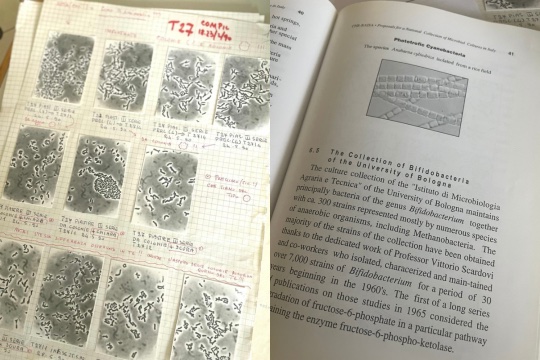The BUSCOB is the collection of bifidobacteria of the University of Bologna housed in the Department of Agricultural and Food Sciences within the Laboratory of Agro-Environmental and Food Microbiology. It is a biobank that holds over 10,000 bacteria, of which 9,000 belong to the genus Bifidobacterium.
This biobank is unique worldwide since it is the only one preserving a very high number of bifidobacteria, the probiotic microorganisms interesting for applications on humans and animals.
Since 1965, when the collection was established in Bologna, about nine thousand bacterial strains have been identified using a taxonomic marker, the enzyme fructose-6-phosphate phosphoketolase, specific to bifidobacteria. In recent years, taxonomic identification has been confirmed for about three thousand strains using new molecular techniques. Professor Vittorio Scardovi began studying bifidobacteria and lactobacilli when he was a Microbiology professor at the Università Cattolica del Sacro Cuore of Piacenza (Italy). When he joined the University of Bologna, he brought the bifidobacteria strains he had isolated up to that point. With great foresight, the Professor described every single strain in "his collection" using identification cards, handwritten or typed. The cards were then enriched with many microphotographies, precious historical records, which he took with an optical microscope in his study and then developed and printed in a darkroom he had set up in the Microbiology laboratory. Today, these cards are still an important source of study and research.
From 1965 to 1995, Scardovi and his research group, which included Prof. Bruno Biavati, discovered and identified 19 novel species of bifidobacteria. Since 2014, the group that continues his legacy has described 27 more; currently, 117 known species of bifidobacteria exist, of which 46 have been isolated and characterized at DISTAL.
Since 2000, Monica Modesto and Paola Mattarelli have implemented and taken care of the collection, inheriting passion and method first from Professor Scardovi and later from Professor Biavati.
"I was a Professor Scardovi’s student, and he taught me everything. Our group has gained wide experience in taxonomic identification. Today, we are a reference point to the scientific community working on this topic: we have been asked again to write the chapter dedicated to bifidobacteria in Bergey's Manual of Systematic Bacteriology, a cornerstone of reference literature for microbiologists. Additionally, both Monica and I are members of the ICSP - Subcommittee for the Taxonomy of Bifidobacteria, Lactobacilli, and Related Organisms, a body responsible for writing identification and characterization guidelines and resolving taxonomic issues related to applied research and industrial exploitation.
From the Professor, we also acquired the method for preserving bacteria in the collection, maintaining their vitality and properties over the years. Thanks to the freeze-drying technique, we can ensure the strains' survival for about 40 years. Periodically, the bacteria are 'refreshed' and checked to test their quality," says Paola Mattarelli.
Browsing through the BUSCOB biobank, it can find truly precious materials. It is a long-term task that should be undertaken when the path leading to the creation of a single university collection, which will join all microbial collections preserved not only at DISTAL but also in other departments of the University of Bologna, is completed. The single university biobank, named BUCC (Bologna University Culture Collection) is subscribing to the Joint Research unit MIRRI-IT, the infrastructure dedicated to Italian biobanks.
Nowadays, BUSCOB is a member of the World Federation for Culture Collections (WFCC), a global network aimed at the ex-situ preservation of microbiological biodiversity. Following this enrollment, BUSCOB gained membership in the European Cultural Collections’ Organisation (ECCO). This step has led to the creation of a dedicated website, making the collection accessible to the scientific community and private individuals who subscribe to an agreement for scientific purposes only. However, if someone wishes to use and commercialize the strains, an agreement must be established in accordance with university policies.
Bifidobacteria are very important microorganisms for both humans and animals. They are mainly found in the gut microbiota, especially of infants, as they are acquired from the mother with early colonization, especially if breastfed.
"What we know today about bifidobacteria is that their presence is closely related to the health of the host organism. Beneficial activities towards the host have been highlighted in human and non-human primates, and all other mammals, as well as birds and insects, especially bees; bifidobacteria play an important role in protecting against gastrointestinal infections and preventing intestinal dysbiosis," explains Monica Modesto.
